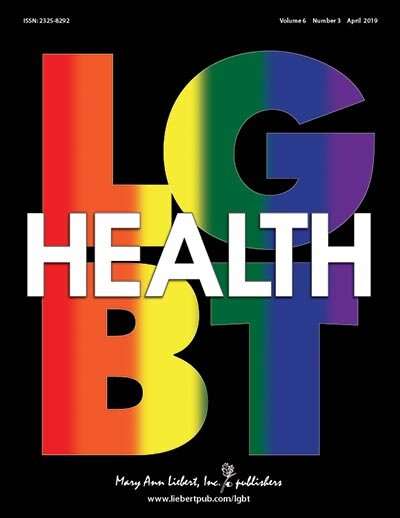Lesbian, gay, and bisexual adolescents at elevated risk for engaging in polysubstance use

In a new study among adolescents in the United States, lesbian, gay, and bisexual adolescents were more likely than heterosexual adolescents to be polysubstance users versus non-users across multiple classes of use: experimental users, marijuana-alcohol users, tobacco-alcohol users, medium-frequency three-substance users, and high-frequency three-substance users. In general, sexual orientation identity differences in polysubstance use class membership were larger for females, especially bisexual females, than for males. The findings regarding sexual orientation disparities in polysubstance use are reported in an article published in LGBT Health.
Robert W.S. Coulter, Ph.D., MPH and colleagues from the University of Pittsburgh and UPMC Children's Hospital of Pittsburgh (PA), Georgetown University Medical Center (Washington, DC), and the University of Maryland (College Park) analyzed 2015 Youth Risk Behavior Survey data from almost 120,000 adolescents living in 19 U.S. states. In the article, entitled "Latent Classes of Polysubstance Use Among Adolescents in the United States: Intersections of Sexual Identity with Sex, Age, and Race/Ethnicity," the researchers estimated latent classes of concurrent polysubstance use characterized by use of alcohol (including heavy episodic drinking), cigarettes, cigars, smokeless tobacco, and marijuana. They then tested for sexual orientation identity differences in polysubstance use class membership and whether sex, race/ethnicity, and age moderated these differences.
"The finding that patterns of polysubstance use vary systematically across sexual minority subgroups on the basis of sexual identity, sex, race/ethnicity, and age is important as it suggests that subgroup-specific interventions are needed to optimally address the sexual minority disparity in polysubstance use," states LGBT Health Editor-in-Chief William Byne, MD, Ph.D., Columbia University, New York, NY.
More information: Robert W.S. Coulter et al, Latent Classes of Polysubstance Use Among Adolescents in the United States: Intersections of Sexual Identity with Sex, Age, and Race/Ethnicity, LGBT Health (2019). DOI: 10.1089/lgbt.2018.0149















